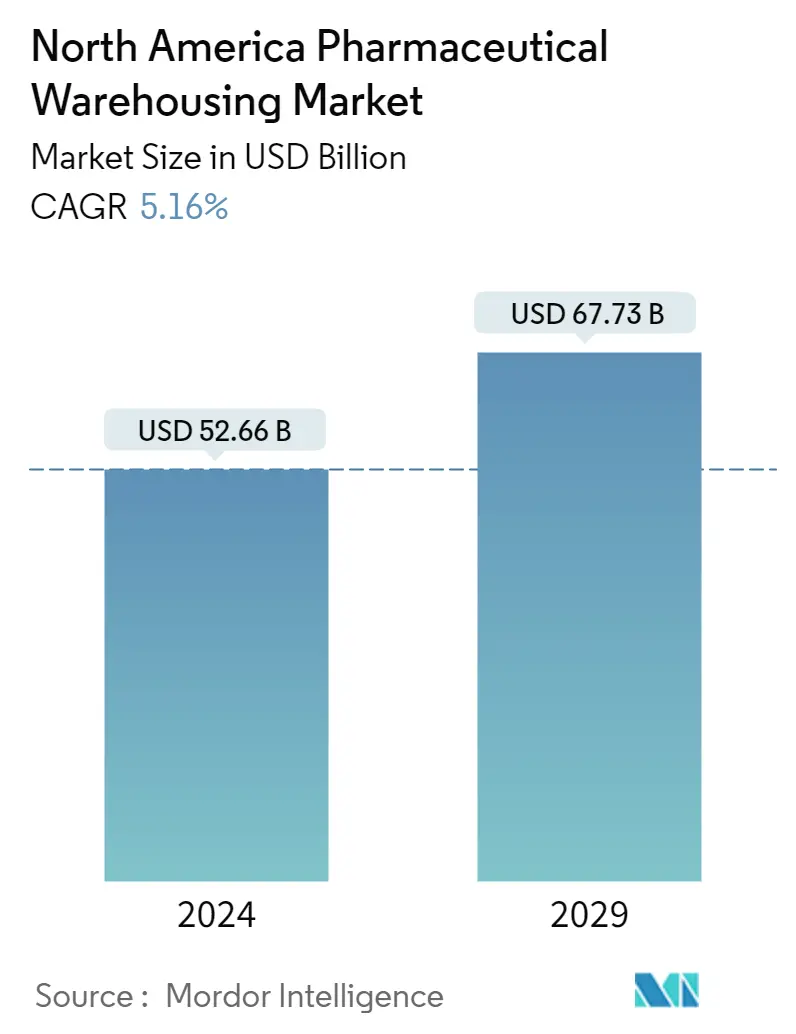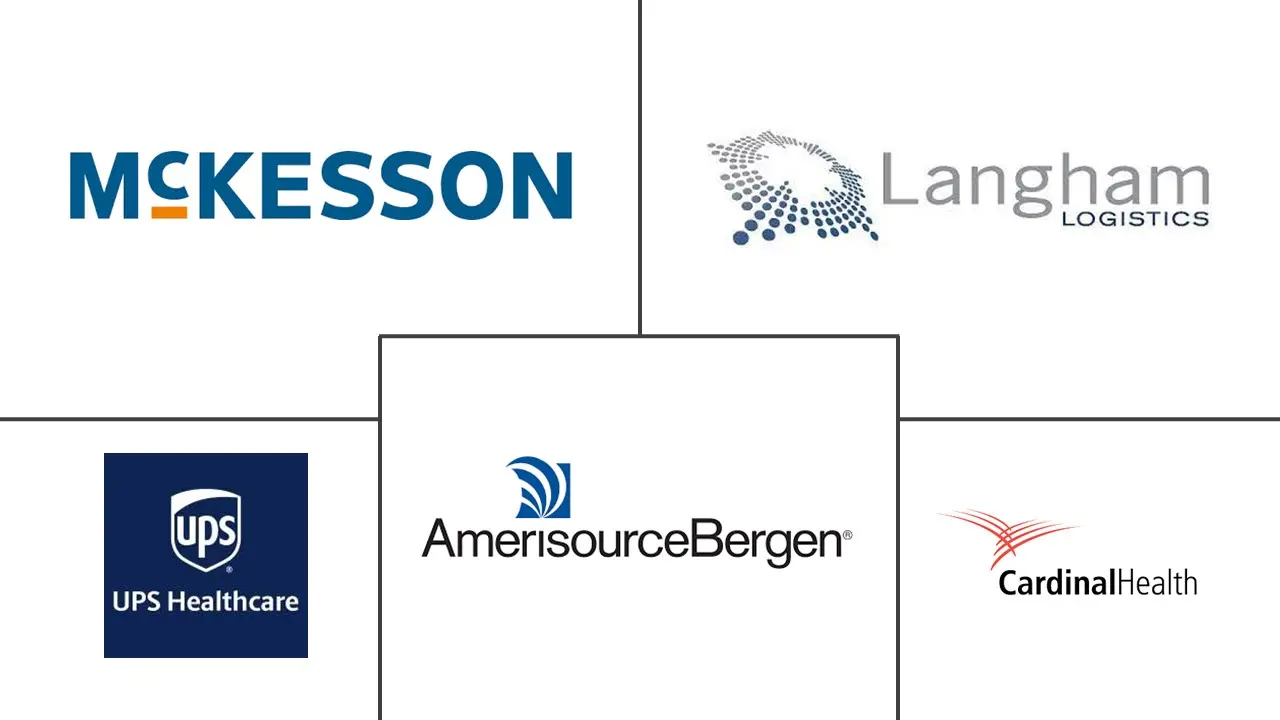Market Size of North America Pharmaceutical Warehousing Industry

| Study Period | 2019 - 2029 |
| Base Year For Estimation | 2023 |
| Market Size (2024) | USD 52.66 Billion |
| Market Size (2029) | USD 67.73 Billion |
| CAGR (2024 - 2029) | 5.16 % |
| Market Concentration | Low |
Major Players
*Disclaimer: Major Players sorted in no particular order |
Need a report that reflects how COVID-19 has impacted this market and its growth?
North America Pharmaceutical Warehousing Market Analysis
The North America Pharmaceutical Warehousing Market size is estimated at USD 52.66 billion in 2024, and is expected to reach USD 67.73 billion by 2029, growing at a CAGR of 5.16% during the forecast period (2024-2029).
The market is seeing the emergence of new technologies such as the Internet of Things (IoT), blockchain, and data analytics to improve visibility, traceability, and overall supply chain performance.
The bulk of the industry’s revenue comes from the warehousing of consumer goods. As a result, warehousing demand typically follows trends in pharmaceutical manufacturing production and consumer spending. Manufacturers that produce more goods to satisfy consumer demand need more pharmaceutical warehouse space.
Before the pandemic, lean pharmaceutical manufacturing was the go-to strategy for most manufacturers to keep working capital to a minimum. Getting products just in time for production kept inventory costs low and used facilities more efficiently. When the pandemic hit, this lean strategy caused many pharmaceutical manufacturers to experience inventory shortages and, in some cases, production to grind to a halt. To avoid inventory shortages in the future, manufacturers increased their on-hand inventory (known as buffer stock).
Outsourcing of logistics operations is on the rise for the past five years, and it’s likely to remain a trend for the foreseeable future. Bigger companies leased more warehouses and distribution facilities to store more inventory as a hedge against increasing supply chain expenses. They also opened more warehouses across multiple locations to reduce delivery times.
In cold chain pharmaceuticals, the use of telematics, remote monitoring, and other cutting-edge technologies is revolutionizing cargo warehousing and transportation with improved safety and connectivity. Pharmaceutical manufacturing companies across North America are expanding their production capacities and operations. As a result, there is an increase in the need for logistics among retailers and distributors for storing raw materials and finished goods.
In the United States, the SNS (Strategic National Stockpile) was originally developed by the federal government in response to chemical or biological threats. Since then, the SNS is instrumental in responding to pandemic-related events, including the Ebola virus outbreak and the monkeypox pandemic (now known as MPox). However, it was not until the pandemic caused a dramatic shortage of essential medical supplies that officials began to recognize its usefulness.
In March 2023, Pharmascience Inc. opened a new USD 4 million distribution center on Dorval’s 55th Avenue, surpassing the size of nine NHL rinks. The new center includes a total area of 156,000 sq ft. It meets or surpasses the Canadian and international standards for storing and handling medicinal products while increasing capacity compared to Pharmascience’s two other centers.
